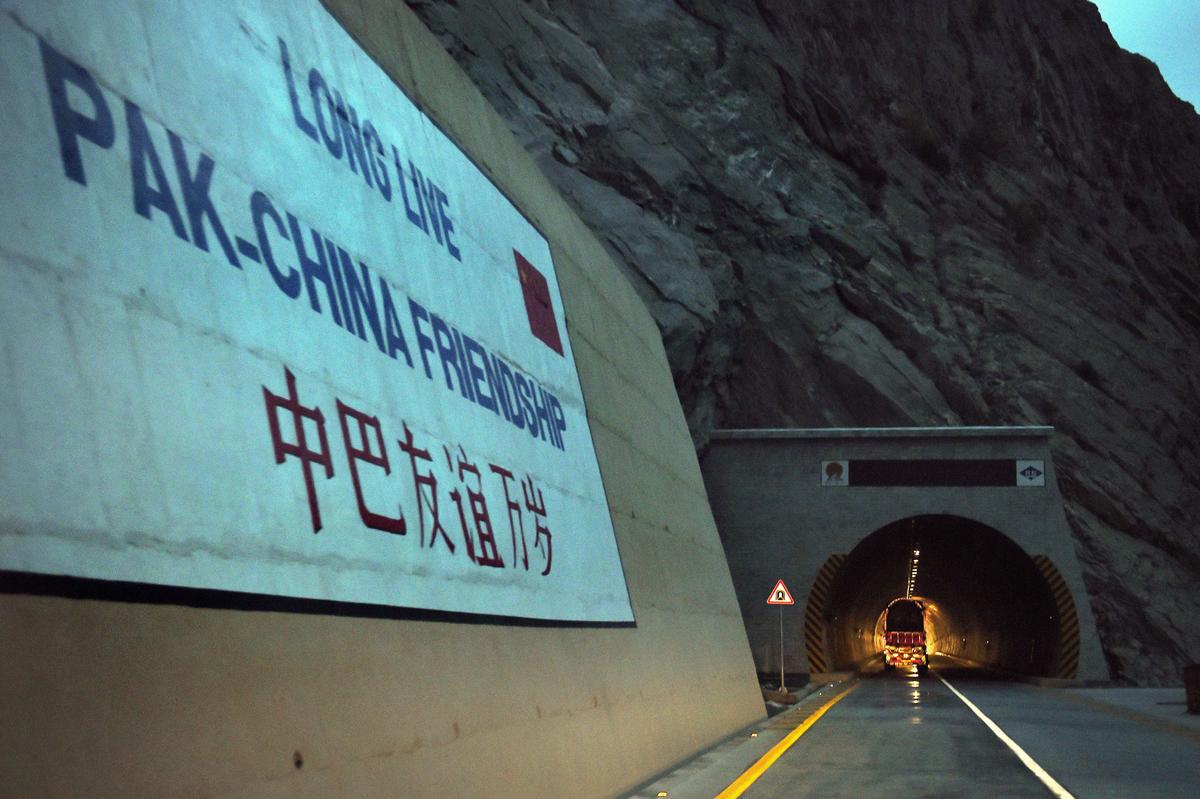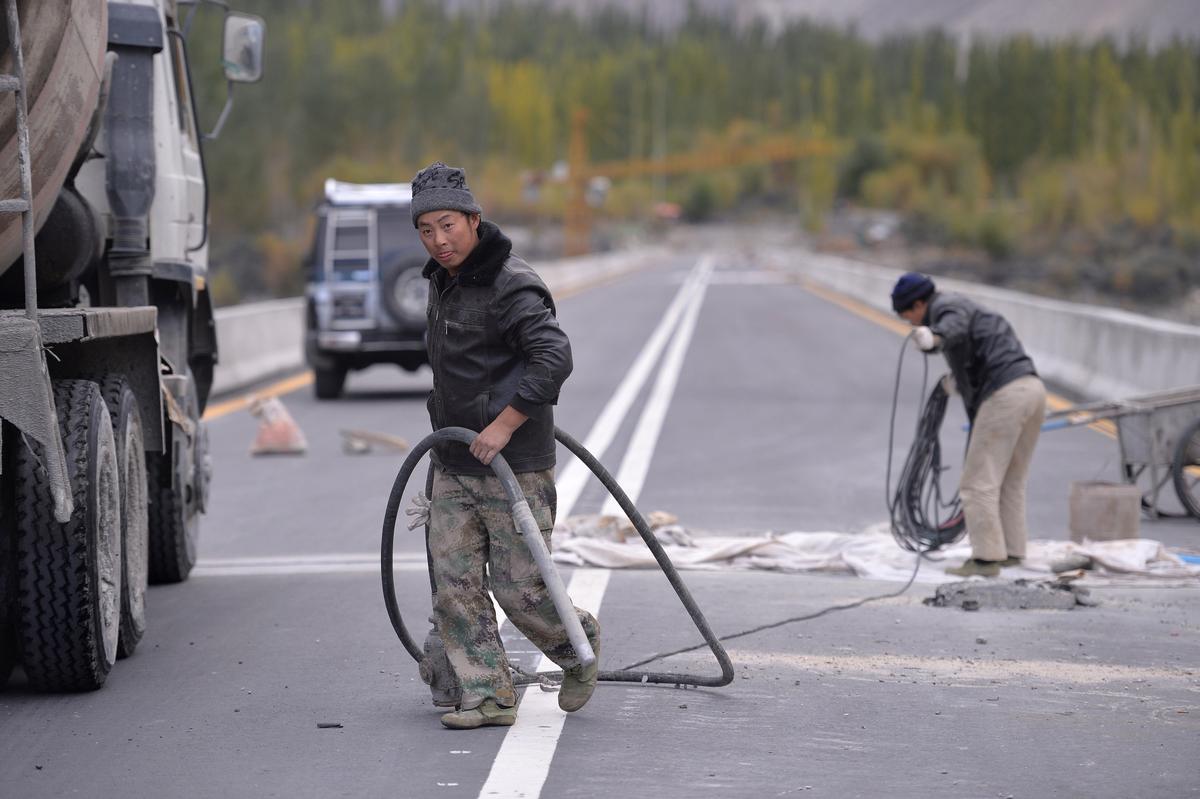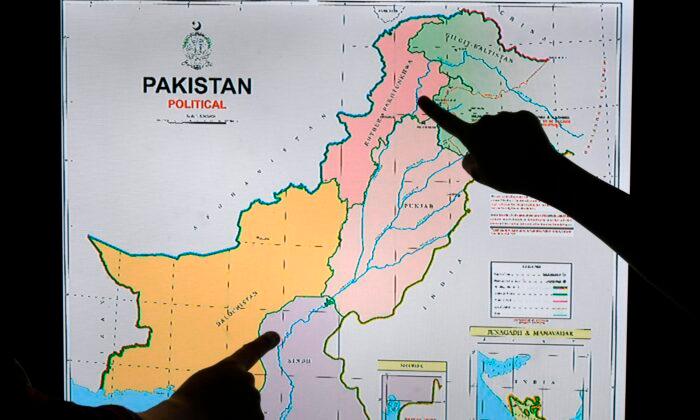By erasing a dotted line on a new map, Pakistan has introduced new controversy into a region that has been the site of four wars between it and India as well as a recent bloody clash between India and China, contested India’s federalization of two provinces a year ago, and supported China’s efforts to exert greater influence.
The dotted line had marked the line of control between Gilgit, occupied by Pakistan but claimed by India, and Jammu and Kashmir, occupied by India but claimed by Pakistan.
While Gilgit had formerly been part of the Kingdom of Jammu and Kashmir, in 1947, a rebellion unseated the ruler of Gilgit, and Pakistan took control of the area from India; in 1974, it was renamed as Pakistan’s Federally Administered Northern Area or Gilgit-Baltistan.
This high altitude area is of strategic importance, sharing a border with China’s Xinjiang Autonomous Region to the north and Afghanistan to the west. It figures into China’s efforts to expand into areas in India’s north. In addition, China is building the China–Pakistan economic corridor (CPEC), a part of the Belt and Road Initiative, through Gilgit.
By erasing the line between Gilgit and Jammu and Kashmir, Pakistan laid claim to all of Jammu and Kashmir. Text written across the new map states: “India illegally occupied Jammu and Kashmir.” Below this text, in parentheses, is written, “Disputed Territory—Final status will be decided in line with the relevant UNSC resolutions.”
Upon unveiling the new map on Aug. 4, Pakistani Prime Minister Imran Khan said it “represents the ambition of the people of Pakistan.”
Ganesh Malhotra, a political analyst from Jammu, a city in the Indian-administered region, told The Epoch Times over the phone that it’s propaganda.
“It’s not anything concrete. It is just an emotional outburst,” Malhotra says.

Pakistan’s Message to India
A year ago, India split the state of Jammu and Kashmir into two federally governed territories—one, Jammu and Kashmir, borders Pakistan, and the other, Ladakh, borders China.India did so by abolishing Article 370 of the Constitution. Since 1947, under Article 370, Jammu and Kashmir had its own constitution, and only those holding its citizenship, called a “state subject,” could buy property in the state. They also held Indian citizenship and could enjoy all privileges that other Indian citizens did.
At the press conference for the release of the new map, Khan called the abolition of Article 370 “illegal.”
“Today, we are introducing the new map of Pakistan before the world. This new map has been endorsed by Pakistan’s cabinet, opposition, and the Kashmiri leadership. This map is as per the aspirations of the entire nation as well as the people of Kashmir,” said Khan.
“This map nullifies the illegal step that India took on Aug. 5 last year with regards to Kashmir. Starting today, this will be the official map of Pakistan,” he added.
Pakistan’s effort to remove the line that previously demarcated Gilgit from the rest of Jammu and Kashmir comes across as an effort to restore the original shape of Jammu and Kashmir as existed on Aug. 15, 1947, Senge Sering, a Washington-based activist who originally comes from Gilgit-Baltistan, told The Epoch Times in a telephone interview.
“This way, Pakistan is trying to reject India’s constitutional decision to bifurcate Kashmir, which gave birth to the Union Territory of Ladakh,” Sering said.
Since the abolition of Article 370, India has repeatedly told China and Pakistan about its claims to Gilgit-Baltistan, where China and Pakistan are building a dam.
Khan’s government-revised map is to counter India’s stance on Gilgit-Baltistan, Sering said.
“This is to discourage India from making overtures towards Gilgit,” he said.
By releasing a new map, Pakistan is trying to bring the Jammu and Kashmir issue into the limelight, but it has “failed miserably” to do that, Harsh Pant, a strategic analyst with the Observer Research Foundation, told The Epoch Times over a chat platform.
“What India did last year on Aug. 5 has failed to generate the kind of backlash Pakistan has hoped it would. So to try to wrest the initiative, Pakistan is now making these rather absurd claims, which, as India has rightfully claimed, have no legal or political validity,” said Pant, who is the author of several books on India’s foreign policy.

Pakistan’s Message to China
CPEC was announced in 2015, and it’s one of the most expensive projects of China’s Belt and Road Initiative, with 122 total projects and $87 billion in funding, according to the Center for Strategic and International Studies. This project passes through the disputed territory of Gilgit-Baltistan, and experts say Pakistan’s new map has a message of support for China.Malhotra pointed at the recent developments in Chabahar, a strategic port in Iran from where Iran and India were jointly building a rail line to Afghanistan through the Wakhan corridor. Iran decided recently to drop India from the project, citing a funding delay, in preference for Chinese support.
“The Wakhan corridor in Afghanistan directly connects to China, and Iran is China’s close ally. Pakistan knows that if CPEC meets with problems, China has an alternate route to the Middle East through Wakhan. It’s frustrated that China may abandon CPEC,” Malhotra said, adding that by integrating Gilgit-Baltistan with the rest of Jammu and Kashmir, Pakistan is trying to appease China.
Sering said that China has emerged as an important player in the “Kashmir fiasco. China is trying to establish a working relationship with Pakistan-sponsored Kashmiri separatists.”
“There are reports of China training terrorist groups that could intensify the proxy war in Kashmir. China already occupies the trans-Karakoram tract and large parts of Ladakh. It has a historical claim on some regions, and now it is trying to claim new regions,” Sering said.
“A failing Pakistan has no option but to share space with China in Jammu and Kashmir and accept Chinese claim on the northern territories. Pakistan showing the Aksai Chin-Tibet border as ‘frontier undefined’ is a step in that direction,” he said.
Pant said he wouldn’t be surprised if China is found to be involved behind Pakistan releasing the new map with the inscription that says “India illegally occupied Jammu and Kashmir.”
“In any case, there’s a high degree of coordination between Chinese and Pakistani forces when it comes to the border with India. Pakistan will do everything possible to help China in Ladakh and to challenge India,” he said.
Malhotra doesn’t think it’s a coincidence that Galwan, the site of the bloody clash between Indian and Chinese soldiers, is roughly 50 miles from the CPEC.
“In 2016-17, China aggressively tried to force India to join its Belt and Road Initiative. But India didn’t agree. China is fearing for the safety of CPEC,” Malhotra said.





